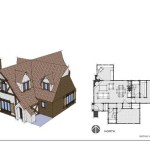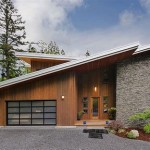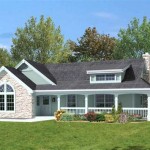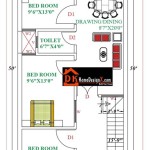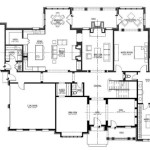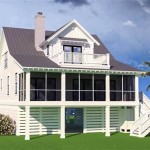An open house plan design is a home layout that eliminates the walls between various living spaces, creating a large, open area. This approach to home design aims to promote a sense of spaciousness and fluidity, enhancing natural light and fostering a closer connection among family and guests.
Open house plan designs are particularly popular in modern homes, where the emphasis is on open and airy living areas. For example, a home with an open house plan might have a kitchen, dining room, and living room that flow seamlessly into one another, creating a welcoming and convivial space.
In this article, we will delve deeper into the design principles and advantages of open house plan designs, exploring how they can transform the functionality and aesthetic appeal of residential spaces. We will discuss the various factors to consider when implementing an open house plan, including furniture placement, natural light, and acoustics.
Here are ten important points to consider when designing an open house plan:
- Maximize natural light
- Define spaces without walls
- Ensure smooth traffic flow
- Consider acoustics and noise control
- Choose multifunctional furniture
- Create focal points
- Maintain visual interest
- Experiment with different ceiling heights
- Incorporate indoor-outdoor connections
- Prioritize energy efficiency
By carefully considering these factors, homeowners can create open house plans that are both beautiful and functional.
Maximize natural light
Natural light has a profound impact on the overall ambiance of any space. In open house plan designs, maximizing natural light is essential for creating a bright and airy atmosphere. There are several key strategies to achieve this:
Large windows and doors: Installing large windows and doors allows ample sunlight to enter the home. Consider floor-to-ceiling windows or sliding glass doors to maximize the amount of natural light that floods the space.
Skylights: Skylights are a great way to introduce natural light into areas that may not have access to windows. They can be placed above kitchens, bathrooms, or hallways to bring in additional light and create a more spacious feel.
Light-colored walls and ceilings: Light-colored walls and ceilings reflect more light, making the space feel brighter and more open. Avoid using dark colors, as they can absorb light and make the space feel smaller and more cramped.
Avoid obstructions: When arranging furniture and other objects, take care not to block the flow of natural light. Heavy curtains, large pieces of furniture, and tall plants can all obstruct the light and make the space feel darker.
By maximizing natural light, open house plan designs can create a more inviting and comfortable living environment. Natural light has been shown to improve mood, boost productivity, and reduce stress levels.
Define spaces without walls
In an open house plan design, defining spaces without walls is crucial for creating a functional and cohesive living environment. Here are four key strategies to achieve this:
- Furniture arrangement: Furniture can be used to delineate different areas within an open floor plan. For example, a sofa and chairs can define a living room area, while a dining table and chairs can define a dining area. By carefully arranging furniture, homeowners can create separate spaces without the need for physical walls.
- Area rugs: Area rugs are another effective way to define spaces within an open floor plan. By placing a rug under a specific area, such as a seating area or dining area, homeowners can visually separate that space from the rest of the room.
- Changes in flooring: Using different flooring materials in different areas of an open floor plan can also help to define spaces. For example, a kitchen area might have tile flooring, while a living room area might have hardwood flooring. This change in flooring material helps to visually separate the two spaces.
- Lighting: Lighting can be used to create different ambiances in different areas of an open floor plan. For example, brighter lighting can be used in a kitchen area, while softer lighting can be used in a living room area. This variation in lighting helps to define the different spaces and create a more inviting atmosphere.
By carefully defining spaces without walls, homeowners can create open house plans that are both functional and stylish.
Ensure smooth traffic flow
In an open house plan design, ensuring smooth traffic flow is essential for creating a functional and comfortable living environment. Here are four key strategies to achieve this:
- Create a central pathway: When designing an open floor plan, it is important to create a central pathway that allows for easy movement throughout the space. This pathway should be wide enough to accommodate furniture and people, and it should not be obstructed by any major obstacles.
- Avoid bottlenecks: Bottlenecks are areas where traffic flow is restricted. In an open floor plan, bottlenecks can be created by furniture, walls, or other obstacles. When arranging furniture, it is important to avoid creating bottlenecks that could impede movement.
- Use furniture to guide traffic flow: Furniture can be used to guide traffic flow in an open floor plan. For example, a sofa can be placed to create a natural pathway from the living room to the kitchen. By carefully arranging furniture, homeowners can create a smooth and efficient flow of traffic.
- Consider the placement of doors and windows: The placement of doors and windows can also affect traffic flow in an open floor plan. Doors should be placed in a way that allows for easy access to different areas of the home, and windows should be placed in a way that does not obstruct traffic flow.
By carefully considering traffic flow, homeowners can create open house plans that are both functional and stylish.
Consider acoustics and noise control
In an open house plan design, acoustics and noise control are important considerations for creating a comfortable and enjoyable living environment. Here are four key strategies to achieve this:
1. Use sound-absorbing materials:
Sound-absorbing materials, such as carpets, rugs, and curtains, can help to reduce noise levels in an open floor plan. These materials absorb sound waves, preventing them from bouncing around the room and creating a noisy environment. When selecting sound-absorbing materials, it is important to choose materials that are appropriate for the specific space and dcor.
2. Create physical barriers:
Physical barriers, such as bookcases, screens, and plants, can also help to reduce noise levels in an open floor plan. These barriers can help to block sound waves from traveling from one area of the home to another. When placing physical barriers, it is important to consider the overall design of the space and to ensure that the barriers do not obstruct traffic flow.
3. Use white noise:
White noise can help to mask other noises and create a more peaceful environment. White noise machines, fans, and even running water can all be used to create a soothing white noise that can help to reduce noise levels in an open floor plan.
4. Consider the placement of furniture and appliances:
The placement of furniture and appliances can also affect noise levels in an open floor plan. For example, placing a noisy appliance, such as a dishwasher or washing machine, in a central location could create noise problems in the entire home. When placing furniture and appliances, it is important to consider the noise levels they produce and to place them in a way that minimizes noise pollution.
By carefully considering acoustics and noise control, homeowners can create open house plans that are both functional and peaceful.
Choose multifunctional furniture
In an open house plan design, choosing multifunctional furniture is a key strategy for maximizing space and creating a functional and flexible living environment. Multifunctional furniture pieces can serve multiple purposes, allowing homeowners to save space and reduce clutter. Here are four key strategies for choosing multifunctional furniture:
1. Look for pieces that can be used in multiple ways:
There are many different types of multifunctional furniture available on the market today. Some popular examples include:
- Sofa beds: Sofa beds can be used as both a sofa and a bed, making them a great option for small spaces or guest rooms.
- Coffee tables with storage: Coffee tables with storage can be used to store blankets, pillows, and other items, freeing up space in other areas of the home.
- Ottomans with storage: Ottomans with storage can be used for seating, as a footrest, and to store items such as toys, games, or blankets.
- Nesting tables: Nesting tables can be used as side tables, coffee tables, or even as a makeshift desk. They are a great option for small spaces or for homes that need flexible furniture.
2. Consider the scale and proportions of the furniture:
When choosing multifunctional furniture, it is important to consider the scale and proportions of the pieces. The furniture should be appropriately sized for the space and should not overwhelm the room. It is also important to consider the proportions of the furniture pieces in relation to each other. For example, a large sofa bed might not be a good choice for a small living room, and a small coffee table might not be a good choice for a large living room.
3. Choose furniture that is durable and well-made:
Multifunctional furniture is often used more frequently than other types of furniture, so it is important to choose pieces that are durable and well-made. Look for furniture that is made from high-quality materials and that is built to last. Avoid furniture that is flimsy or cheaply made, as it is likely to break down more quickly.
4. Choose furniture that fits your style:
Multifunctional furniture should not only be functional, but it should also fit your personal style. There are many different styles of multifunctional furniture available on the market, so you can find pieces that match your taste and dcor. For example, if you have a modern style, you might choose a sofa bed with clean lines and a neutral color. If you have a more traditional style, you might choose a sofa bed with a more ornate design and a rich fabric.
By following these tips, homeowners can choose multifunctional furniture that will help them maximize space, create a functional and flexible living environment, and express their personal style.
Create focal points
In an open house plan design, creating focal points is an essential strategy for adding visual interest and creating a sense of balance and harmony. A focal point is an object or area that draws the eye and becomes the center of attention in a space. By carefully placing focal points throughout an open floor plan, homeowners can create a more inviting and visually appealing living environment.
- Fireplace: A fireplace is a classic focal point that can add warmth and ambiance to any space. In an open floor plan, a fireplace can be used to define a seating area or to create a natural gathering space. When placing a fireplace in an open floor plan, it is important to consider the overall layout of the space and to ensure that the fireplace does not obstruct traffic flow.
- Artwork: Artwork can be a great way to add a touch of personality to an open floor plan. A large piece of artwork can be hung on a wall to create a focal point, or a collection of smaller pieces can be arranged to create a more eclectic look. When choosing artwork for an open floor plan, it is important to consider the scale and proportions of the space. The artwork should be appropriately sized for the space and should not overwhelm the room.
- Furniture: Furniture can also be used to create focal points in an open floor plan. A large sofa or armchair can be placed in the center of a room to create a seating area, or a unique piece of furniture, such as an antique armoire or a modern sculpture, can be used to add visual interest to a space. When using furniture to create focal points, it is important to consider the overall design of the space and to ensure that the furniture does not obstruct traffic flow.
- Architectural features: Architectural features, such as a vaulted ceiling, a large window, or a built-in bookcase, can also be used to create focal points in an open floor plan. These features add visual interest and character to a space and can help to define different areas within an open floor plan. When highlighting architectural features, it is important to consider the overall design of the space and to ensure that the features do not overwhelm the room.
By carefully creating focal points throughout an open floor plan, homeowners can create a more visually appealing and inviting living environment.
Maintain visual interest
In an open house plan design, maintaining visual interest is essential for creating a dynamic and engaging living environment. By incorporating a variety of elements into the design, homeowners can create a space that is both visually appealing and functional.
- Use a variety of colors and textures:
One of the easiest ways to add visual interest to an open floor plan is to use a variety of colors and textures. This can be achieved through the use of different paint colors, fabrics, and furniture. For example, a homeowner might choose to paint one wall a bold color to create a focal point, or they might use different textures to create a more layered look.
- Incorporate different patterns:
Patterns can also be used to add visual interest to an open floor plan. Patterns can be incorporated into the design through the use of wallpaper, rugs, curtains, and furniture. When using patterns, it is important to choose patterns that complement each other and that do not overwhelm the space.
- Add personal touches:
Personal touches can also add visual interest to an open floor plan. This can be achieved through the use of artwork, photographs, and other personal items. When adding personal touches, it is important to choose items that reflect the homeowner’s personality and style.
- Use lighting to create different ambiances:
Lighting can also be used to create different ambiances in an open floor plan. For example, bright lighting can be used to create a more energetic atmosphere, while softer lighting can be used to create a more relaxing atmosphere. When using lighting, it is important to consider the overall design of the space and to ensure that the lighting does not create any glare or shadows.
By incorporating these elements into the design, homeowners can create an open floor plan that is both visually appealing and functional.
Experiment with different ceiling heights
Experimenting with different ceiling heights can add visual interest and architectural drama to an open house plan design. By varying the height of the ceiling in different areas of the home, homeowners can create a sense of spaciousness and grandeur, as well as define different spaces and create a more dynamic living environment.
One common approach to experimenting with ceiling heights is to create a vaulted ceiling in the main living area. A vaulted ceiling is a ceiling that is higher in the center than it is at the sides, creating a sense of height and openness. Vaulted ceilings are often used in great rooms or living rooms, where they can create a dramatic focal point and make the space feel more spacious.
Another approach to experimenting with ceiling heights is to create a coffered ceiling. A coffered ceiling is a ceiling that is divided into sunken panels, or coffers. Coffered ceilings can add a touch of elegance and sophistication to a space, and they can also help to define different areas within an open floor plan. For example, a coffered ceiling could be used to define the dining area in an open kitchen-dining room.
In addition to vaulted and coffered ceilings, there are many other ways to experiment with ceiling heights in an open house plan design. For example, homeowners could create a dropped ceiling in a specific area of the home, such as the kitchen or entryway. A dropped ceiling is a ceiling that is lower than the ceiling in the rest of the home, and it can be used to create a more intimate and cozy space.
By experimenting with different ceiling heights, homeowners can create an open house plan design that is both visually appealing and functional.
Incorporate indoor-outdoor connections
Incorporating indoor-outdoor connections is a key strategy for creating a more inviting and comfortable living environment in an open house plan design. By blurring the lines between the inside and outside, homeowners can create a space that feels more spacious,, and connected to nature.
- Large windows and doors:
Large windows and doors are a great way to bring the outdoors in. By installing large windows and doors, homeowners can create a seamless connection between the indoor and outdoor living spaces. This can be especially effective in areas with beautiful views, such as a backyard garden or a scenic landscape. When choosing windows and doors, it is important to consider the size, shape, and placement of the openings. The windows and doors should be appropriately sized for the space and should be placed in a way that maximizes natural light and views.
- Sliding glass doors:
Sliding glass doors are a great way to create a more open and flexible connection between the indoor and outdoor living spaces. Sliding glass doors can be opened up to create a seamless transition between the two spaces, or they can be closed to create a more private and intimate setting. When choosing sliding glass doors, it is important to consider the size, style, and functionality of the doors. The doors should be appropriately sized for the space and should be designed to complement the overall style of the home.
- French doors:
French doors are another great way to create a connection between the indoor and outdoor living spaces. French doors are typically made of glass and have a hinged design, which allows them to be opened up to create a wide opening. French doors are a good choice for homes with traditional or classic architectural styles. When choosing French doors, it is important to consider the size, style, and functionality of the doors. The doors should be appropriately sized for the space and should be designed to complement the overall style of the home.
- Patios and decks:
Patios and decks are a great way to extend the living space outdoors. Patios are typically made of concrete or pavers, while decks are typically made of wood. Both patios and decks can be used for a variety of purposes, such as dining, entertaining, or simply relaxing. When designing a patio or deck, it is important to consider the size, shape, and location of the space. The patio or deck should be appropriately sized for the space and should be placed in a way that maximizes privacy and views.
By incorporating indoor-outdoor connections into an open house plan design, homeowners can create a more inviting, comfortable, and spacious living environment.
Prioritize energy efficiency
Incorporating energy-efficient features into an open house plan design is not only beneficial for the environment, but it can also save homeowners money on their energy bills. Here are four key strategies for prioritizing energy efficiency in an open house plan design:
- Use energy-efficient appliances:
When choosing appliances for an open house plan, it is important to look for energy-efficient models. Energy-efficient appliances use less energy to operate, which can save homeowners money on their energy bills. When looking for energy-efficient appliances, look for the ENERGY STAR label. The ENERGY STAR label indicates that the appliance meets certain energy-efficiency standards.
- Install energy-efficient windows and doors:
Windows and doors are a major source of heat loss in a home. By installing energy-efficient windows and doors, homeowners can reduce the amount of heat that escapes from their home, which can save them money on their energy bills. When choosing energy-efficient windows and doors, look for windows and doors that have a high Energy Efficiency Ratio (EER) or a low U-factor. The EER measures the energy efficiency of a window or door, while the U-factor measures the rate of heat transfer through a window or door.
- Use energy-efficient lighting:
Lighting is another major source of energy consumption in a home. By using energy-efficient lighting, homeowners can reduce the amount of energy that is used to light their homes, which can save them money on their energy bills. When choosing energy-efficient lighting, look for light bulbs that have a high Lumens per Watt (LPW) rating. The LPW rating measures the energy efficiency of a light bulb.
- Install a programmable thermostat:
A programmable thermostat can help homeowners save energy by automatically adjusting the temperature in their home based on a preset schedule. When the home is unoccupied, the thermostat can be set to a lower temperature, which can save energy. When the home is occupied, the thermostat can be set to a higher temperature, which can make the home more comfortable.
By incorporating these energy-efficient features into an open house plan design, homeowners can create a more sustainable and cost-effective living environment.










Related Posts

